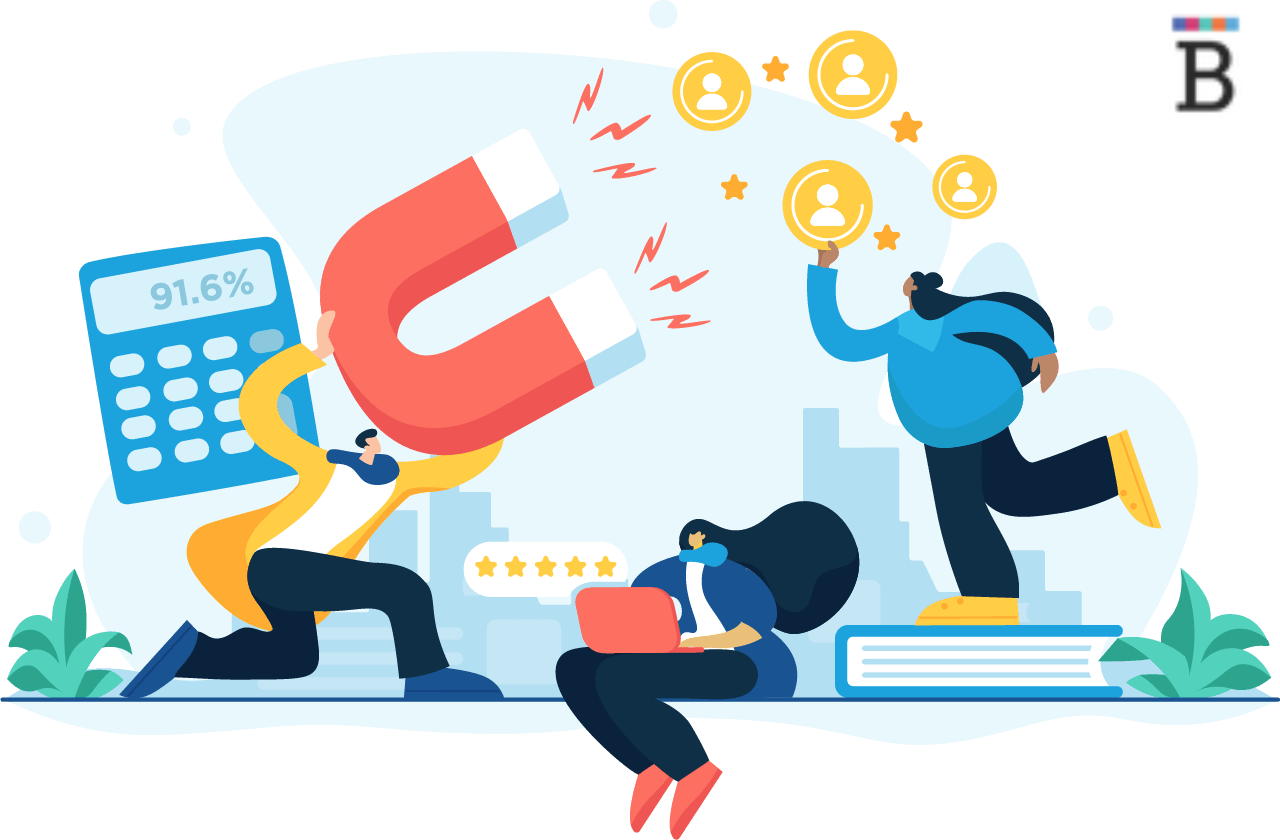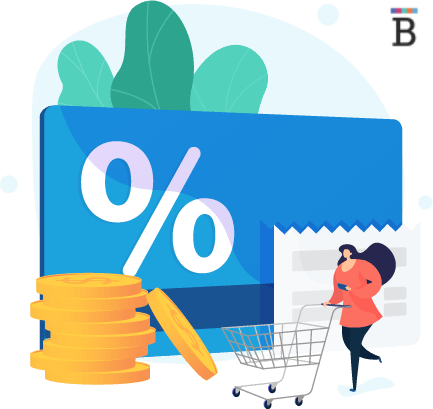Aquisition Rate Percentage of Existing Customers Who Continue to Buy on a Regular Basis
- Customer retention is when one of your buyers purchases from you again.
- Your customer retention rate compares the number of customers you have retained to your total number of customers during a certain period.
- You can use customer loyalty programs, customer feedback surveys, social media and additional incentives to improve your customer retention rate.
- This article is for business owners looking to calculate and/or improve their customer retention rate.
Marketing often focuses strongly on drawing new customers to a company. However, this tactic should not replace tending to your existing customer base. If anything, retaining customers can be easier and less expensive than pursuing new leads. Research shows that most businesses make sales to between 5% and 20% of new customers, but that jumps to 60% to 70% for existing customers. With so much to gain from strong customer retention, it is important to understand your retention rates so you know if you need to do more work in this area.
What is customer retention?
Customer retention is when a first-time customer turns into a repeat one by coming back to make another purchase from you. If a customer buys the same product on a regular basis or several different products on an irregular basis, you have retained the customer.

Savvy customer retention practices emphasize this repeated purchasing and strive to make each customer more profitable to your company. They also benefit your customers, as most customer retention strategies involve making the shopping experience easier. This is a win-win, allowing you to get more value from your customers and your customers to get more value from you.
The value of developing solid customer relationships can't be understated. One analysis shows that a 5% increase in customer retention results in a profit increase of 25% to 95%, with 65% of a company's purchases coming from returning customers. Another analysis found that retaining customers is seven times less expensive than acquiring them. You can determine whether your company is effectively harnessing this power by calculating your customer retention rate.
 Did You Know: A 5% increase in customer retention results in a profit increase of 25% to 95%, with 65% of a company's purchases coming from returning customers.
Did You Know: A 5% increase in customer retention results in a profit increase of 25% to 95%, with 65% of a company's purchases coming from returning customers.
What is the customer retention rate?
Your company's customer retention rate is the percentage of your customers who, during a given period, are not first-time buyers. To calculate your customer retention rate, gather the following data:
- Your total number of customers at the start of the period, signified by the variable S
- Your total number of customers at the end of this period, signified by the variable E
- Your total number of new customers acquired during this period, signified by the variable N
Note that N refers to the number of customers you gained, independent of whether you lost any customers. As such, if you gain 30 customers but lose 12, use 30 for N, not 30 – 12 = 18. Your number of lost customers matters only when calculating E, which is the sum of S and the difference between your gained and lost customers.
How to calculate customer retention
Using the above variables, this is the customer retention rate (CRR) formula:
CRR = [(E – N)/S]
When you calculate your customer retention rate, you will see a decimal as the value. You can convert this decimal to a percentage by multiplying it by 100.
Here's an example. Let's say that, at the beginning of the most recent quarter, your company had 120 customers. Over this quarter, you gain 40 customers but lose 10. As such, S = 120, E = 120 + 40 – 10 = 150, and N = 40. When you plug these values into the customer retention rate formula, you get the following:
CRR = [(150 – 40)/120] = 91.67%
This value is approximately that of many industry-leading companies. Of course, a customer retention rate of 100% would be ideal, but even the largest companies in an industry rarely achieve this metric – and, more importantly, lower rates are far more common for small businesses. Often, a small business's customer retention rate during a two-month period is closer to 20%, though when e-commerce is factored in, the rate increases to 35%.
 TIP: Your customer retention rate is the ratio between the number of customers you have kept during a given period and the total number of customers at the start of that period.
TIP: Your customer retention rate is the ratio between the number of customers you have kept during a given period and the total number of customers at the start of that period.
How to improve your customer retention rate
If the aforementioned customer retention rates sound too low for your liking, you can take several approaches to improve your rate. These are some of them:

1. Customer loyalty programs
A common tactic companies use to hold on to customers is to register them in a loyalty program. You might first think of large businesses with rewards cards when you imagine customer loyalty programs, but even the smallest businesses can implement this strategy.
For example, to run a hassle-free customer loyalty program, you could use an email marketing platform to deliver newsletters that include discounts and offers available solely to loyalty program members. With this incentive, your customers might be more likely to buy from you again.

2. Customer feedback surveys
After customers make a purchase, ask them to complete a feedback survey to inform you about their experience. This can make the customer feel listened to and valued, increasing the likelihood they will return for future purchases. However, if you gather customer input without ever implementing changes, you might appear uncaring and thus lose customers.
Notably, customer feedback surveys are convenient because you can administer them in many ways. You can request that customers take your survey after a customer service call, send an email survey after an e-commerce purchase, or include a survey URL or QR code on a paper receipt.
 TIP: You can improve your customer retention rate through strategies such as customer loyalty programs, customer feedback surveys, social media, and additional incentives.
TIP: You can improve your customer retention rate through strategies such as customer loyalty programs, customer feedback surveys, social media, and additional incentives.
3. Social media

Almost every business owner is familiar with the benefits of using social media for marketing, and social media is just as powerful for customer service. You can use strategic hashtags or separate customer service social accounts to make your company easily reachable on channels that your customers likely already use every day. When you couple this presence with quick responses and meaningful solutions, customer retention often follows.
4. Additional incentives
If you've ever stopped purchasing products from a brand and then get an email offering you discounts if you return, you've seen the power of incentives for customer retention. You can use marketing automation and email marketing to identify customers you've recently lost and offer them incentives, increasing the likelihood that you'll retain them. This approach can be just as useful for first-time buyers whom you hope to convert to retained customers – again, after all, retention is often easier than acquisition.

Source: https://www.businessnewsdaily.com/16027-customer-retention-rate.html
0 Response to "Aquisition Rate Percentage of Existing Customers Who Continue to Buy on a Regular Basis"
Post a Comment